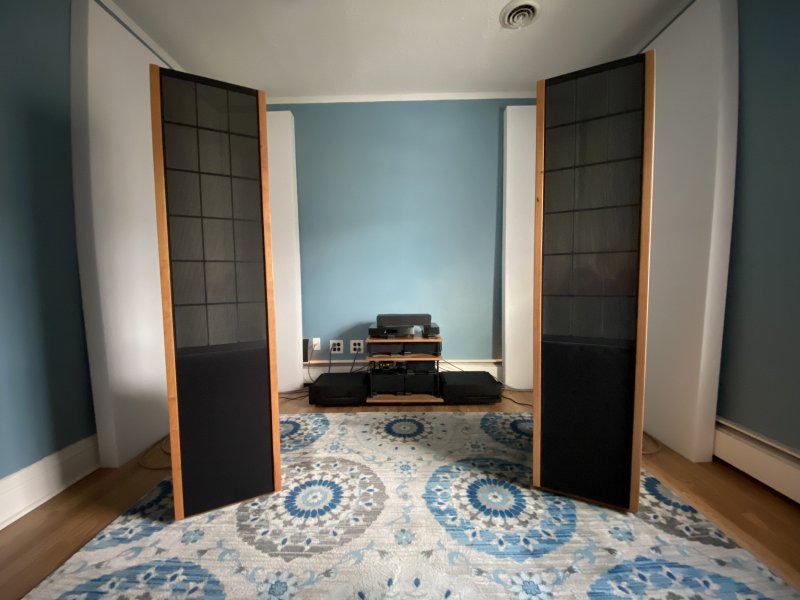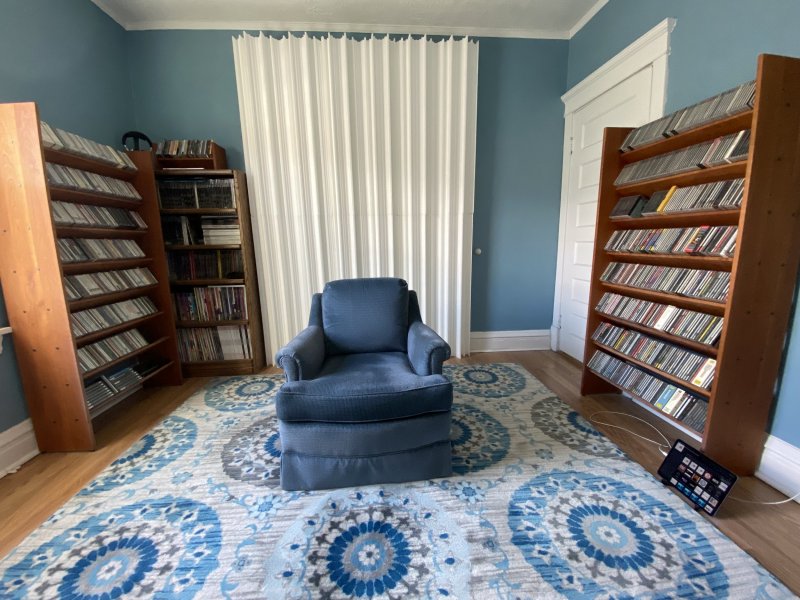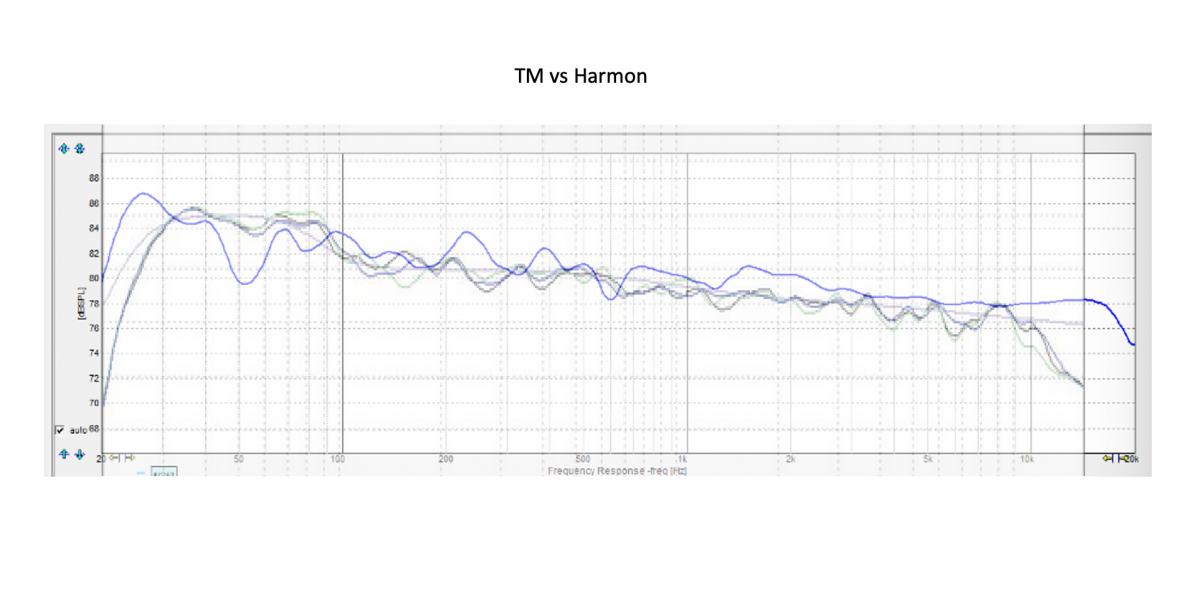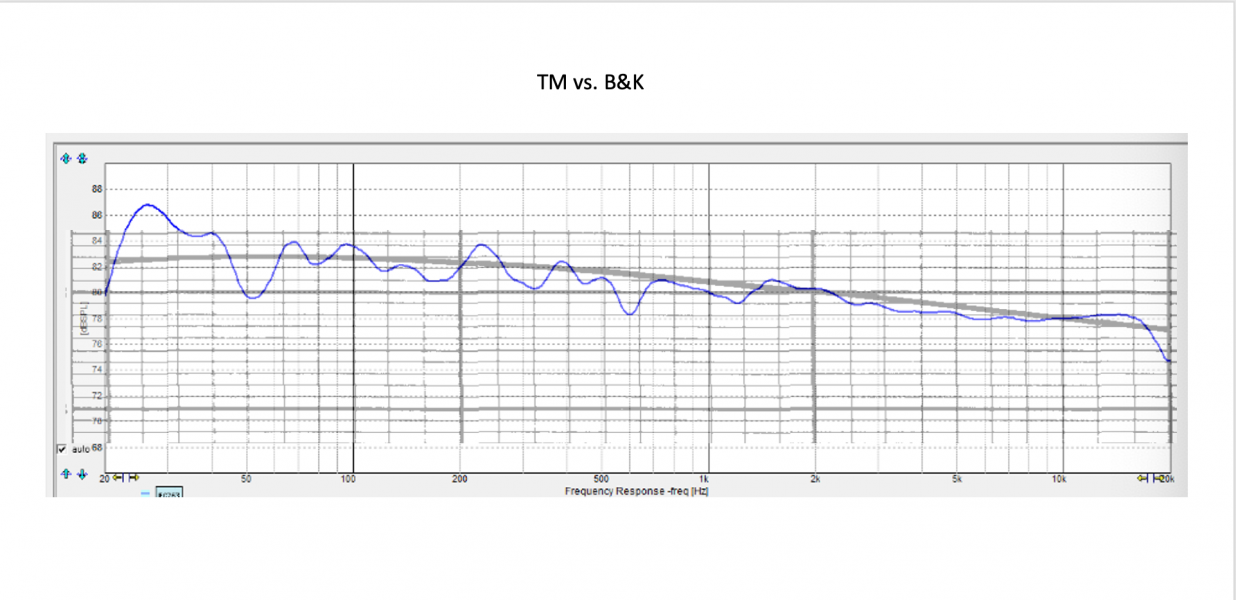The First Time Around: The Sanders 10c
About a decade ago I owned the then-current-model Sanders 10c speakers. Toward the beginning of my time with them I wrote:
About a decade ago I owned the then-current-model Sanders 10c speakers. Toward the beginning of my time with them I wrote:
Yes, the way sound projects from a panel into a room is much different from the way it comes from a quasi-point source like the Harbeths. Whether you like the projection of a panel more or less than the point source is probably a matter of personal taste. It is certainly quite different. The panel projects images in a definitely taller and bigger, but perhaps less rounded manner than the Harbeths. What was clear right from the start is that the Sanders open an apparently VERY large window on the musical event with only a 60-degree subtended angle of separation. What is less clear is whether and the extent to which the nature of the images generated is affected by room damping.
The sound from this system, with the room padding as I currently deployed it, more than any other stereo system I've owned, is focused on a small spot with respect to the walls of the room, just big enough for your head if you sit still while listening, as I do. You only hear correct stereo and the intended frequency response in that small spot. This is true of all other stereos as well, of course, but it is much more blatantly obvious with this one. The sweet spot is really the only spot from which you can hear anything like the intended presentation; elsewhere the stereo is skewed left or right a lot and the highs are very rolled off. If I remove the 4' by 6' patches of Sonex from behind the speakers, the sound is acceptable throughout the listening end of the room, much like with all the other speakers systems I've used. So far, I think that the sweet spot is less sweet that way, however. (There is, however, considerable latitude in terms of listening height, which is nice to have in a floor-standing speaker, allowing a wide latitude in the type of listening chair you use.)
The Sanders 10C will play very loud without strain with what are apparently only a few watts of input. The claimed sensitivity rating in the mid-90s seems realistic. It will play louder than I need without strain or apparent compression.
The overall sound is very clear, even more so than the Harbeth M40.1s. Small details are clarified in a natural sounding, non-etched manner. Like some other electrostats, the sound also is still very detailed and clear at quite low volume levels.
The Sanders have a combination of attributes which is very revealing of recording quality. They are not "forgiving" of the high frequency quality of recordings in the way the M40.1 and AR speakers are. However, the Sanders don't cross the line into being what I call "ruthlessly revealing," which is a term I apply to systems which make all but the best recordings at least a bit unpleasantly bright/nasty sounding.
Thus, if the recording is overly bright, the Sanders clearly tell you that, but they do not aggravate the situation by adding additional distortion to the highs. With recordings that are bright but clean, it is easy to listen around the report of exaggerated high frequency response. The Sanders very clearly reveal, for the first time in my home audio experience, the differences among (1) recordings where the highs are merely exaggerated in level but are low in distortion, (2) those recordings which sound annoyingly bright because the highs are both exaggerated in level and overlaid with harmonic or other types of distortion, and (3) recordings which just have a layer of high-frequency distortion without actually having highs which are exaggerated in level.
The bass can be adjusted to be measurably flat and powerful at high volumes without audible distortion down to 20 Hz without added subwoofers. The room walls shake from the bass power on tap at high levels.





